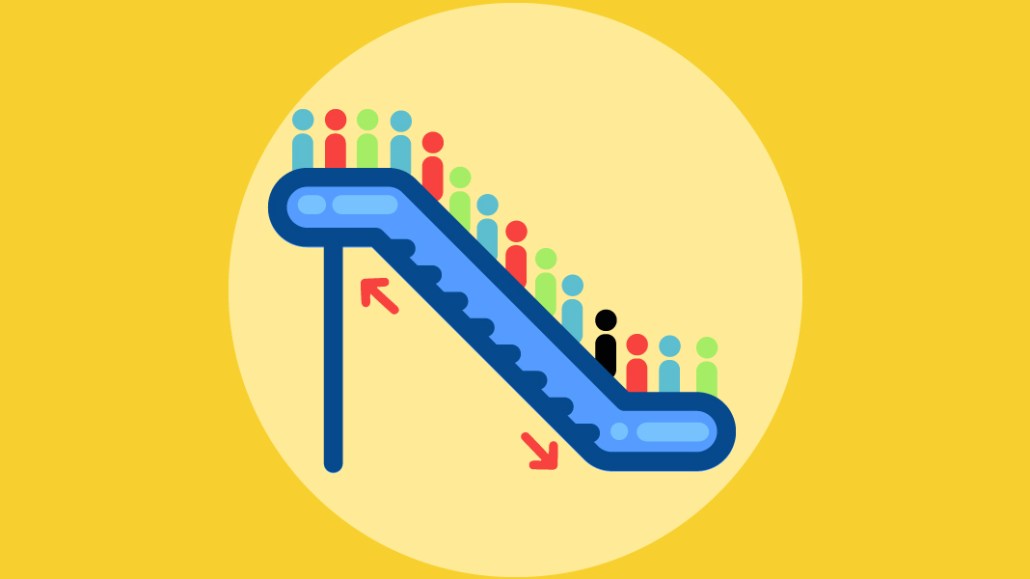‘Opening the paywall is not an option’: Schibsted sees subscriptions mini-boom

There’s an insatiable appetite for accurate news and information during the coronavirus pandemic. Publishers’ high traffic peaks are translating to subscriptions.
Compared to the first two weeks of the month, Nordic publisher Schibsted has sold twice as many daily subscriptions to its multiple different news brands across Sweden and Norway, a trend for the last two weeks. But the coming months will bring tightening economic pressures, a rise in unemployment plus the initial adrenaline rush of the news cycle will wear off. As it sells monthly, three-monthly and annual subscriptions, it’s too soon for any concrete data on whether these new readers will prove to be long-term advocates. Even so, Schibsted is preparing for the impact on retention.
“We have very high subscription sales and then we have a low churn and then we have very high engagement on the sites,” said Tor Jacobsen, svp consumer business at Schibsted. “We may have a higher churn again in April and May, if it will be a very tough economic period with high unemployment.”
Publishers like Bloomberg, The Atlantic and Axel Springer are seeing subscription bumps as readers want to consume more news. Axel Springer is also selling twice as many subscriptions each day to its two titles — Bild Plus and Welt Plus — than planned. But, publishers’ advertising revenue is being squeezed by between 30% and 40%, according to sources, in-person events are on pause and commerce revenues face hurdles from stock shortages. Subscriptions are a small bright spot as long as publishers can keep hold of them.
Schibsted has three core focus points for churn-prevention management: Tailoring readers’ experience when they first enter the site, maximizing the relevant products during the subscriber’s first two months and cancellation flows that offer relevant or lower-cost offers. Within these there are multiple levers it can pull to keep people reading more content and so stick around.
“In general, the churn is now lower than usual. In the list of the reasons why people are churning, ‘I lost my job’ is in the top 20, so it’s still very low,” said Jacobsen. “But we need to follow it. It’s not a huge problem right now, but it could be in one or two months.”
Schibsted has around 30 people working in its customer services team across its brands who aim to save people as well as staff in data and analytics teams.
Ad position: web_incontent_pos1
Over the next year, it plans to make the experience for subscribers and members across its site much more differentiated with exclusive content like podcasts and separate user journeys to non-paying members. In the last two months, Schibsted has improved renewal rates by allowing subscribers to choose which of the publishers’ editors they want to hear from for all their email newsletters and marketing messages. The publisher has also improved its cancellation flows.
As news of the pandemic began to spread, most U.S. subscription publishers like The Wall Street Journal and The New York Times dropped paywalls or lowered meters to make journalism accessible to all as a public service. This trend hasn’t translated as thoroughly to Europe. Instead, if people want to quit then Schibsted will offer a cheaper price.
“Opening the paywall is not an option,” said Jacobsen. “With advertising as it is right now, we really need those revenue streams.” Because of coronavirus, on Mar. 24 the publisher said it was canceling its previously announced proposal to pay dividends as its revenues are weakened.
Tech provider Piano, which helps publishers with subscription strategies, has been monitoring churn but hasn’t seen evidence of it yet. “The main concern we’ve heard from publishers is what happens at the end of a trial or in a few months when the news becomes less urgent,” said Michael Silberman, svp strategy at Piano.
Like other publishers, Schibsted has tweaked the content it’s publishing, showcasing more articles about old movies, managing personal finances and how to ensure healthy familial relationships in very close quarters. It’s also launched personal trainer exercise videos — publishers like Hearst and PopSugar have opened up their fitness content — and moved in-person courses online. This Thursday Schibsted is hosting a virtual wine tasting course after 1,000 people signed up in four days. It’s also had a clear boost in language courses.
Ad position: web_incontent_pos2
“Typically in a crisis like this, it’s about where we see an extra boost in existing trends,” said Jacobsen. “One is e-commerce, one is e-learning and the third is subscriptions. We really need to maximize the possibilities to be stronger on these sides.”
More in Media

NewFronts Briefing: Samsung, Condé Nast, Roku focus presentations on new ad formats and category-specific inventory
Day two of IAB’s NewFronts featured presentations from Samsung, Condé Nast and Roku, highlighting new partnerships, ad formats and inventory, as well as new AI capabilities.

The Athletic to raise ad prices as it paces to hit 3 million newsletter subscribers
The New York Times’ sports site The Athletic is about to hit 3 million total newsletter subscribers. It plans to raise ad prices as as a result of this nearly 20% year over year increase.

NewFronts Briefing: Google, Vizio and news publishers pitch marketers with new ad offerings and range of content categories
Day one of the 2024 IAB NewFronts featured presentations from Google and Vizio, as well as a spotlight on news publishers.
Ad position: web_bfu


